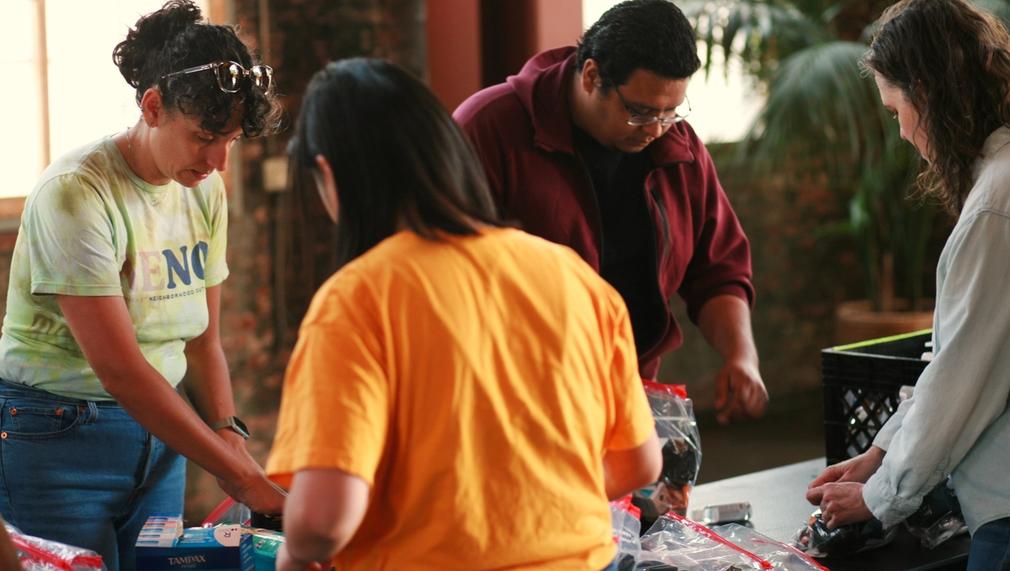Forge the missing link between unhoused people and LAHSA
Northeast Neighborhood Outreach engages in direct outreach with our unhoused neighbors every week, forging relationships by providing food and other essentials. Because we venture out to people's encampments and meet with the same people each week, we nearly always have more contact with people than their own LAHSA caseworker, if they even have one. This grant would fund a full-time staffer that would be able to actively make connections between our efforts and LAHSA's and expand our program.

What is the primary issue area that your application will impact?
Affordable housing and homelessness
In what stage of innovation is this project, program, or initiative?
Expand existing project, program, or initiative (expanding and continuing ongoing, successful work)
What is your understanding of the issue that you are seeking to address?
The joint Los Angeles city-county effort to end homelessness has struggled for years to engage with and meet the needs of the vast unhoused population of the Los Angeles area, in large part because there are not enough resources, especially staff. A Rand Corporation report from last year describes an "understaffed environment" in the Homelessness response sector and an "unsustainable" status quo. There is little evidence that things have changed, and meanwhile the latest homeless count indicates that the unhoused population continues to rise. Organizations like Northeast Neighborhood Outreach fill in the gaps that the government is unable to address by focusing on a hyperlocal population, building a long-term relationship of trust with each person on our weekly "route" so that they can be connected to existing services. However, because NENO is an entirely volunteer-run organization, there are limits to our ability to make these connections and fully engage the local population.
Describe the project, program, or initiative this grant will support to address the issue.
A grant would create our first staffed position for NENO, which would greatly expand our ability to reach more people and engage them with LAHSA efforts such as the coordinated entry system. Once the effectiveness of our approach has been demonstrated, we would seek to continue funding for this staff position via private donations. With a full-time staffer, NENO would be able to both visit more people on the streets in our neighborhood and also to coordinate efforts with similar hyperlocal volunteer groups such as SELAH. These efforts, with a dedicated paid worker, could then be connected with each council member's office and the larger Los Angeles city and county government efforts to reduce homelessness. Councilmembers are eager to reduce homelessness in their districts, but often have very little direct contact with their constituents who are experiencing homelessness. Conversely, NENO volunteers spend a lot of time with the unhoused people in our neighborhoods but have little access to official city and county initiatives and infrastructure for combatting homelessness. Our staffer would provide the missing link between these efforts.
Describe how Los Angeles County will be different if your work is successful.
A richly successful demonstration of the effectiveness of NENO's model would have broad implications for LA County. Our success could inspire countless similar organizations to build relationships between their local unhoused neighbors and their councilmember or supervisor. This large-scale coordination would not only increase the effectiveness of existing programs to provide housing, substance use treatment, and mental health, they would also reduce housed resident's concerns and lack of information about their unhoused neighbor, and contribute to a powerful sense of being a part of the solution. Over time, the combined impact of our program and similar programs could finally reduce the number of unsheltered people experiencing homelessness in the Los Angeles area.
What evidence do you have that this project, program, or initiative is or will be successful, and how will you define and measure success?
Our existing network of around 20 volunteers visit 75-100 per week and to date have identified nearly 30 people that were connected to city council programs and placed in interim housing. Of that number, we have confirmed that 3 have been placed in permanent housing, where we continue to be in touch with them. In addition to housing, we have also assisted people by connecting them to programs like the USC Street Medicine Team for people with chronic medical issues that otherwise would have no access to healthcare. We will build on this success with the grant by measuring the number of people we have identified and linked up with city council offices that were eventually placed into interim housing. We will track this data with a confidential spreadsheet that is verified with our government partners.
Approximately how many people will be impacted by this project, program, or initiative?
Direct Impact: 100.0
Indirect Impact: 46,260.0